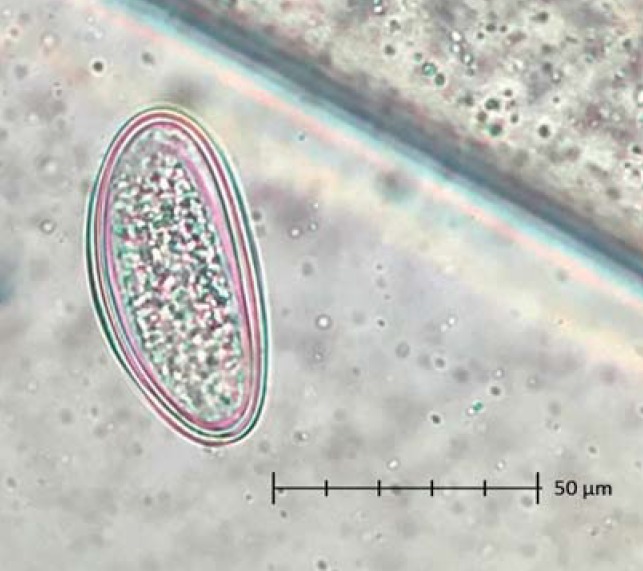A 4-year-old girl was presented to the pediatric outpatient clinic because of agitation and sleep disturbances. She was reported to scratch herself frequently in the genital area and to be generally “fidgety.” Her 11-year-old brother had similar symptoms, with recurrent pruritus ani. Inspection revealed mild erythema of the vulva and a circa 10 mm-sized, white, wormlike, mobile structure. Microscopic examination confirmed the diagnosis of oxyuriasis (Enterobius vermicularis) with a female worm and eggs (figure). After treatment with one dose of pyrantel each, the siblings were asymptomatic. Female Enterobius worms come out of the anus at night and lay their eggs at the anal ring. The eggs can usually be revealed with anal tape, but the test is not very sensitive and should thus be repeated at least three times. If a child presents with nonspecific symptoms, such as agitation and insomnia with nocturnal pruritus and signs of vulvovaginitis or even appendicitis, the differential diagnosis should include this typical childhood parasitosis, which is only rarely encountered in the “wrong” place.
Figure.
Cite this as: Eder IB, Wendt S, Lipek T: Extraintestinal oxyuriasis.
Translated from the original German by Ethan Taub,M.D.
Footnotes
Conflict of interest statement:
The authors state that they have no conflict of interest.



